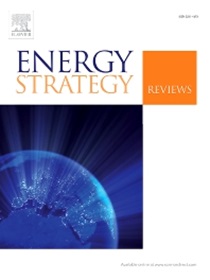Measuring and optimizing pathways for regional economic and low-carbon coordination effects: A case study of the Yangtze River Economic Belt
IF 7.9
2区 工程技术
Q1 ENERGY & FUELS
引用次数: 0
Abstract
Greenhouse gas emissions exacerbate the tension between economic development and low-carbon objectives, necessitating differentiated regional low-carbon development strategies. This study provides a preliminary analysis of the carbon emission characteristics of the Yangtze River Economic Belt. It investigates the relationship between economic output and emissions using the Tapio decoupling model. Regional green total factor productivity (GTFP) is assessed using a stochastic non-parametric data envelopment analysis (DEA) approach to clarify the output targets for regional low-carbon development. A multi-objective optimization model is developed, integrating the STIRPAT, NSGA-III, and TOPSIS methods to identify optimal development pathways for the next decade. Key findings include: (1) Carbon emissions initially increased before stabilizing, with over 80 % originating from the secondary sector. (2) Both weak and strong decoupling states were observed between GDP and the carbon emission decoupling index, with fewer provinces exhibiting strong decoupling. (3) The GTFP of downstream regions is significantly superior to that of upstream regions, and technological progress has a more pronounced impact on GTFP than changes in technical efficiency. (4) Forecasting and optimization results indicate that the economic development scenario is optimal, followed by the energy development scenario, whereas the low-carbon development scenario performs least favorably. Achieving the dual objectives of regional economic growth and emission reductions within the next decade is projected to require a confluence of factors: an 8 % annual economic growth rate, a decline in fossil fuel dependence to 53 % of the energy mix, and a contraction of the secondary sector's contribution to 47 %.
衡量和优化区域经济和低碳协调效应的路径:长江经济带案例研究
温室气体排放加剧了经济发展与低碳目标之间的紧张关系,有必要采取差别化的区域低碳发展战略。本研究对长江经济带碳排放特征进行了初步分析。本文使用Tapio解耦模型研究了经济产出与排放之间的关系。为了明确区域低碳发展的产出目标,采用随机非参数数据包络分析(DEA)方法对区域绿色全要素生产率(GTFP)进行了评估。结合STIRPAT、NSGA-III和TOPSIS方法,建立了一个多目标优化模型,以确定未来十年的最优发展路径。主要发现包括:(1)碳排放先是增加后趋于稳定,其中80%以上来自第二产业。②GDP与碳排放脱钩指数存在弱脱钩和强脱钩状态,强脱钩的省份较少;(3)下游地区GTFP显著优于上游地区,技术进步对GTFP的影响比对技术效率变化的影响更为显著。④预测与优化结果表明,经济发展情景最优,能源发展情景次之,低碳发展情景最差。要在今后十年内实现区域经济增长和减少排放的双重目标,预计需要多种因素共同作用:年经济增长率达到8%,对化石燃料的依赖下降到能源结构的53%,第二部门的贡献下降到47%。
本文章由计算机程序翻译,如有差异,请以英文原文为准。
求助全文
约1分钟内获得全文
求助全文
来源期刊

Energy Strategy Reviews
Energy-Energy (miscellaneous)
CiteScore
12.80
自引率
4.90%
发文量
167
审稿时长
40 weeks
期刊介绍:
Energy Strategy Reviews is a gold open access journal that provides authoritative content on strategic decision-making and vision-sharing related to society''s energy needs.
Energy Strategy Reviews publishes:
• Analyses
• Methodologies
• Case Studies
• Reviews
And by invitation:
• Report Reviews
• Viewpoints
 求助内容:
求助内容: 应助结果提醒方式:
应助结果提醒方式:


